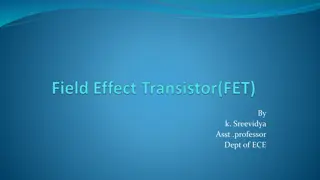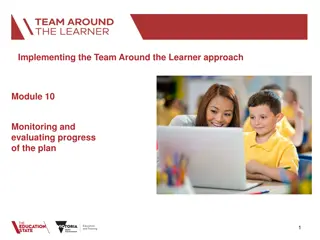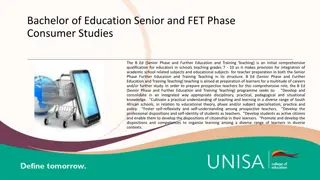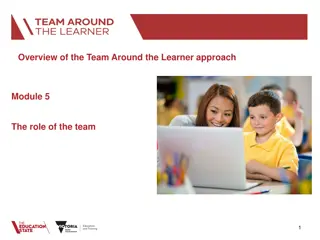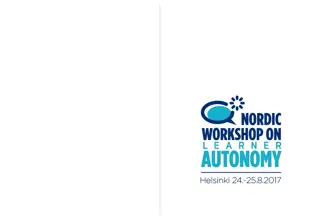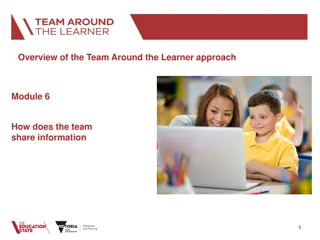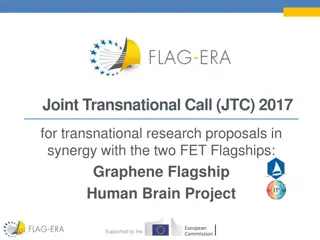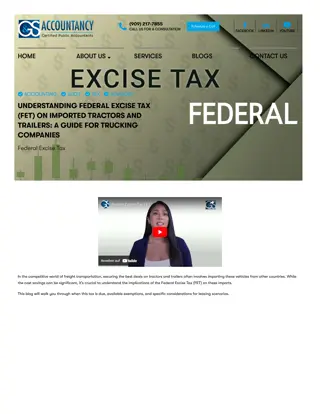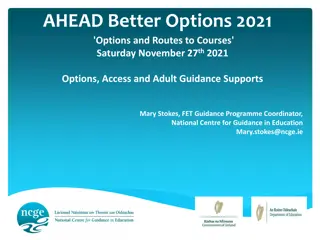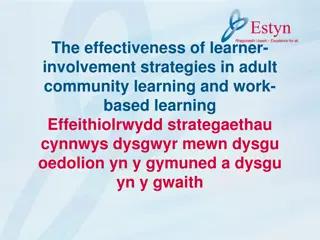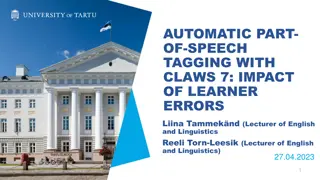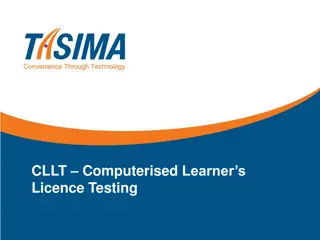
Learner Engagement in Further Education and Training Development
Explore the critical role of learner engagement in the advancement of further education and training, as discussed by Andrew Brownlee. Discover the evolution of Ireland's FET system, strategic planning, learner data tracking, outcomes-based funding, and initiatives to enhance learner pathways from FET to higher education.
Download Presentation

Please find below an Image/Link to download the presentation.
The content on the website is provided AS IS for your information and personal use only. It may not be sold, licensed, or shared on other websites without obtaining consent from the author. If you encounter any issues during the download, it is possible that the publisher has removed the file from their server.
You are allowed to download the files provided on this website for personal or commercial use, subject to the condition that they are used lawfully. All files are the property of their respective owners.
The content on the website is provided AS IS for your information and personal use only. It may not be sold, licensed, or shared on other websites without obtaining consent from the author.
E N D
Presentation Transcript
The Critical Role of Learner Engagement in the Next Phase of Development of Further Education and Training Andrew Brownlee Executive Director, Strategy and Knowledge, SOLAS Conference on Best Practice in Student-Centred Approaches to Education and Training 20thNovember 2018
Further education and training critical to Irelands development for over a century but an integrated FET system is relatively new Multi- annual strategic planning Building systems & capability Agreements Templates developed to support ETBs in building up strategic performance agreements Data Supported by the development or robust learner data tracking system Planning Build on the foundation and continual improvement of FARR annual planning framework. Consult Event in September, internal & external consultation, pilots to test process. Establishment phase Strategic Pilots Initiative tested and developed a process with 3 ETBs. Outcomes Focus FET Strategy 2014- 19 commits to a system of outcomes-based planning and funding New Ecosystem SOLAS and ETBs becoming established as part of new skills development ecosystem (National Skills Council, Regional Skills Fora) Targets 3 year national targets for FET set down in SOLAS Corporate Plan.
FET provision has always been characterised by a learner-focused ethos and the first FET strategy prioritised the learner voice Systematically benchmark learners views and satisfaction with their FET programme on an ongoing basis through the establishment of a learner forum and appropriate Learner Surveys Annual learner follow-up and destination surveys conducted Further Education and Training Strategy 2014-2019 National FET Learner Forum established and developed on regional and cross-sectoral basis Customer Service Charter established to set out how ETBs will engage with learners in decision-making processes
The work of the learner forum has been important in articulating a learner voice and has been targeting a wider base of FET learners It is not clear what my options are when I finish my course. Important and wonderful that we are heard by those in government Lack of clarity on processes and supports available to learners transitioning to HE I have specific issues at local level (timing of classes/parking) We need more part-time, flexible provision It is too big a jump from my core skills training to a Level 5/6 course FEEDBACK Strong focus on clearer learner pathways. New target set for ETBs on progression within FET NFLF reports included as part of the High Level Progress Review of the FET Strategy 2014 2019 (Prospectus) Working with the Department of Education, HEA, and other stakeholders to clarify pathways for learners to transition from FET to HE (target 10%) ETBs have considered how to address the issues through their ongoing improvements process Skills to Advance new Policy Framework is making that a reality Course options being developed at Level 4 to provide bridge between Levels 1,2 & 3 and Level 5 & 6 provision ACTION
Further education and training has unique characteristics which make student engagement structures more challenging Student cohort roughly equivalent to that of higher education (circa 200k) However 340k beneficiaries, meaning many accessing more than one course Many part-time and short-term courses (maximum duration of a FET course is 1 year) Community based model characterised by small scale provision Work-based components of much provision takes students away from communal settings Large proportion of adult learners with competing demands Putting in place an effective student/learner representative structure a major challenge
There is some good practice in FET to facilitate student-centred approaches but further development needs to be supported Major commitment to quality assurance and ensuring learner input into QA processes Student-centred approaches clear in ETB strategic statements, strategic performance agreements & quality improvement plans ETBs working with Aontas to ensure strong regional learner feedback which can shape planning, support and provision Class representative structure across much PLC provision Natural communities of learners have emerged but often on a programme to programme basis
There needs to be a collaborative approach to development of learner engagement infrastructure across FET Representative voice that can help shape planning and provision Opportune moment as ETBs work to implement integrated approaches to learner support and guidance, learner pathways and quality assurance Student Centred Further Education and Training Ambassadorial role that can promote and champion FET opportunities Student input to quality assurance and improvement
We need to consider options that lead to a stronger and more representative learner voice helping shape the future of FET SPARK type training to empower learners as representatives and ambassadors Create new opportunities for student/learner ambassadors to promote benefits of FET Technology platforms to facilitate learner input Examine potential for learner representative structures at ETB level Use USI expertise to consider how best learners can be represented Build on the work of the Learner Forum and increase its coverage across FET Clearly track and demonstrate link between learner input and action taken Most critically, development has to be ground up , driven by the leadership, support and engagement of FET learners themselves






